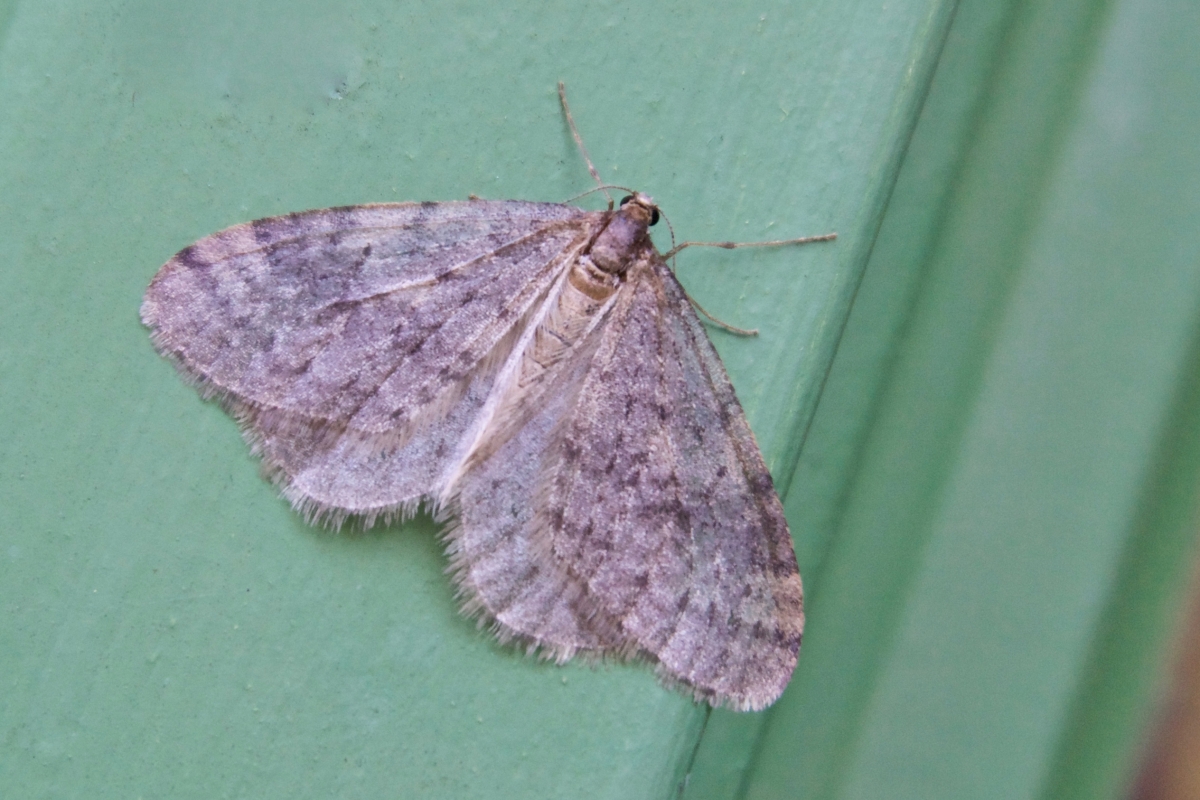It’s early morning. Still dark. Outside temperature is about 0° C and there are several Bruce spanworm moths on the window. The other evening, only a few degrees above freezing, we counted nearly 6 dozen on that same window, all drawn to the kitchen light.
As I discovered, these moths are unusual in several ways — not the least of which is their ability to remain active in cold weather.
Greg Pohl, Insect/Disease Identification Officer with Natural Resources Canada, explained how this is possible:
“Winter moths are quite remarkable. They’re adapted to fly at temperatures as cold as -3°C. They put quite a bit of their energy reserves into antifreezing chemicals in the bodies, and they also “shiver” to warm up their bodies and flight muscles to the point that they can fly. So even though they’re “cold blooded”, they have some ability to warm their bodies. They’re very highly adapted to fly late in the fall, and thus avoid many predators. But those survival skills wouldn’t likely be developed in warm-weather day-flying species like monarchs.”

If not for finding these nondescript moths in such cold temperatures I might have paid them little heed. Lesson learned: sometimes the plainest wrapping holds the biggest surprise.

They are nondescript, except for the details that emerge with a closer inspection, like that fringe. The coping mechanisms of creatures are amazing. The thought of a moth producing its own antifreeze is the sort of fact that can leave me staring into space, trying to understand how such a thing could be possible.
LikeLiked by 1 person
Indeed it can. Wood frogs are another example of a strange coping mechanism. They can freeze and thaw several times during the winter. I’m not sure what the benefit of that is to them since many other frogs simply shut down for the whole winter. https://thelensandi.wordpress.com/2016/06/15/frogsicle/
LikeLike
Very interesting, Sally. Nature is amazing in terms of its adaptations. Anti-freeze in the blood— hard to imagine. But evolution just keeps chugging along. I read the other day that birds in England are growing longer beaks to better access bird feeders! –Curt
LikeLike
Longer beaks?!? My oh my. 🙂
LikeLike
And in such a short time, Sally! So much for the theories about evolution taking forever…
LikeLike
I wonder if Darwin is rolling over somewhere? 🙂
LikeLike
Has been for a long time, I think… 🙂
LikeLiked by 1 person
They look like frosted moths.
LikeLike
The one on the window pane certainly does. And later this week they may be covered in the real thing as the temperature drops and snow arrives.
LikeLike
We always see lots of these moths in the fall, esp. when there is little else left to fly. Tough little adapters!
LikeLike
I’ll say! “-)
LikeLiked by 1 person